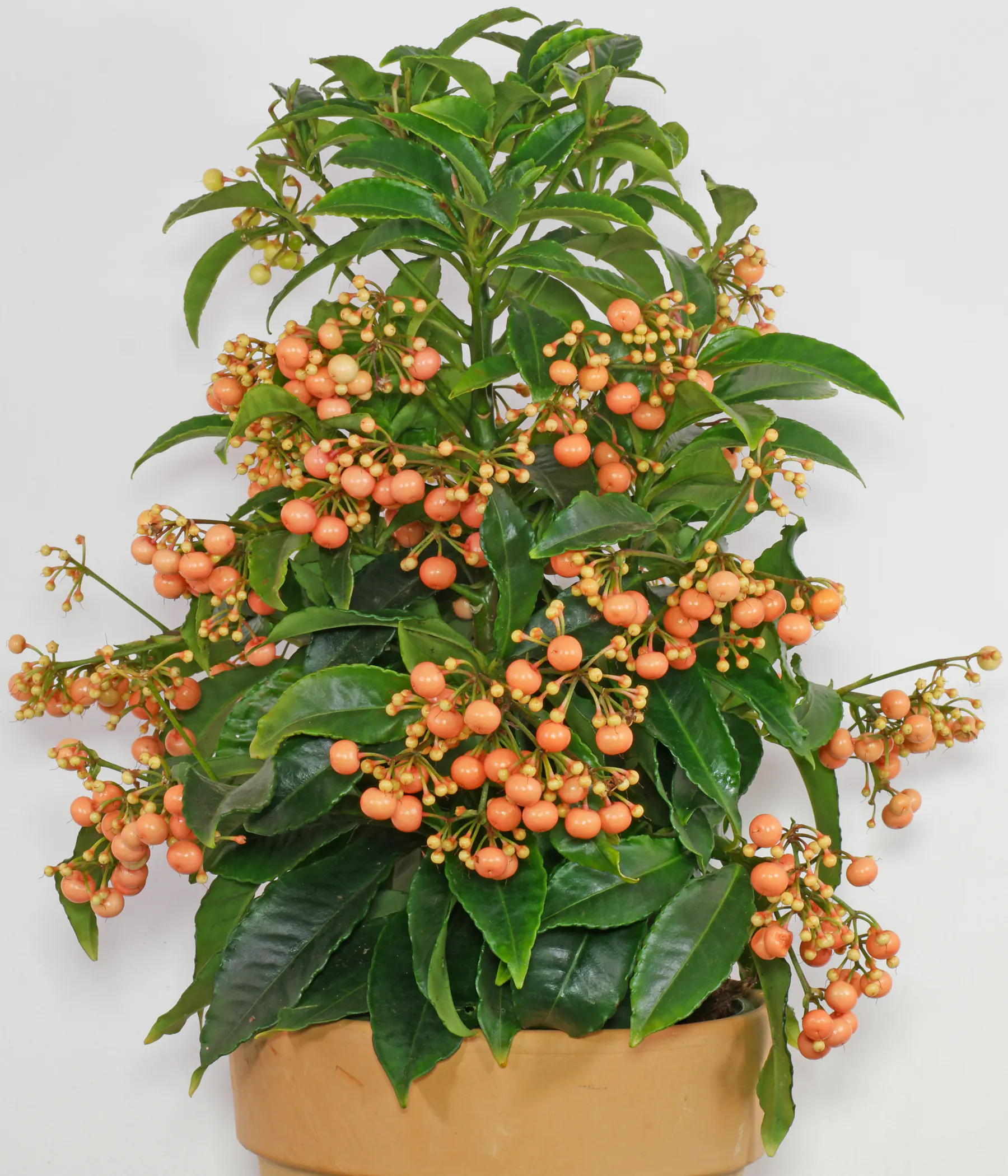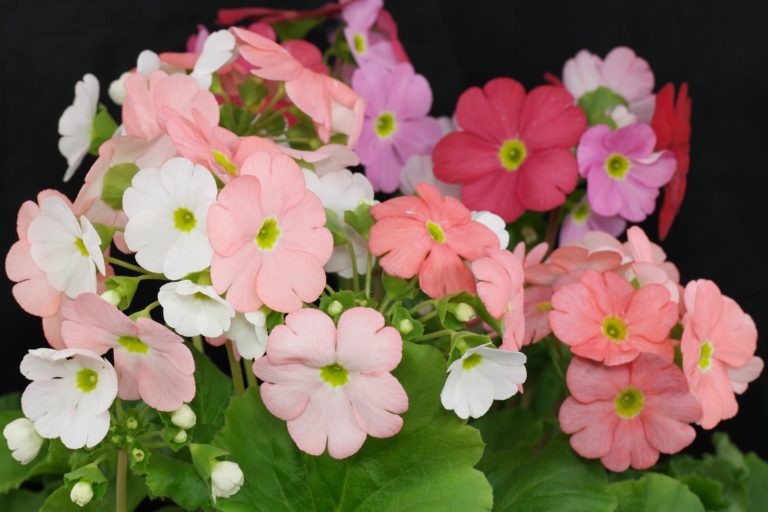Coral Berry, Christmas Berry
Coral Berry or Christmas Beery, as Ardisia crenata is also called, is related to primroses (Primula). It is native to China, Japan and India, can grow up to one meter in height and can be obtained with red, orange or white berries.
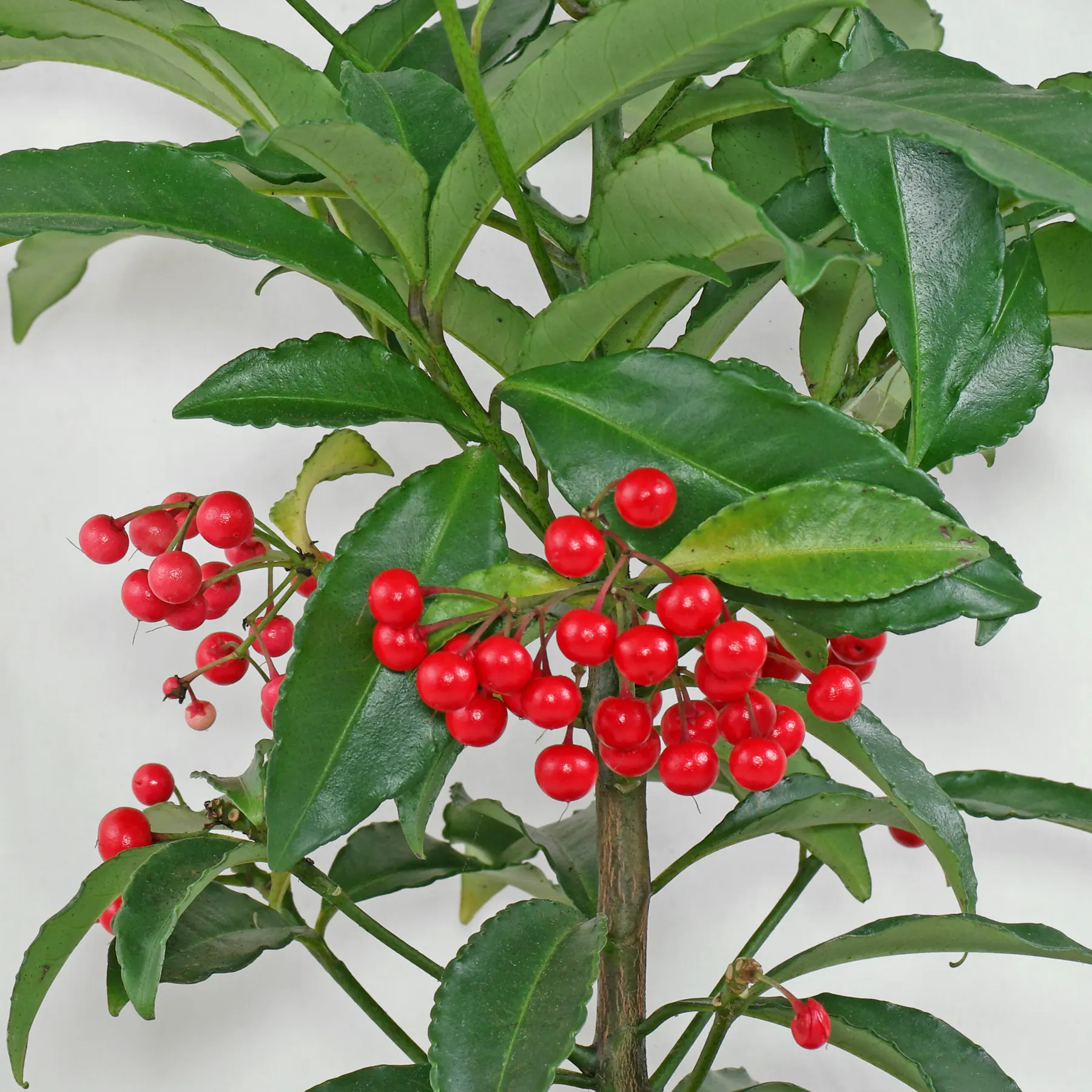
Care
Lighting
Ardisia crenata grows well in bright locations with morning, evening and winter sun. If it stands behind the window with a minimum distance of 50 centimeters, it can also tolerate the hot summer sun.
It may be left over summer in a semi-shaded spot in the garden or on the balcony.
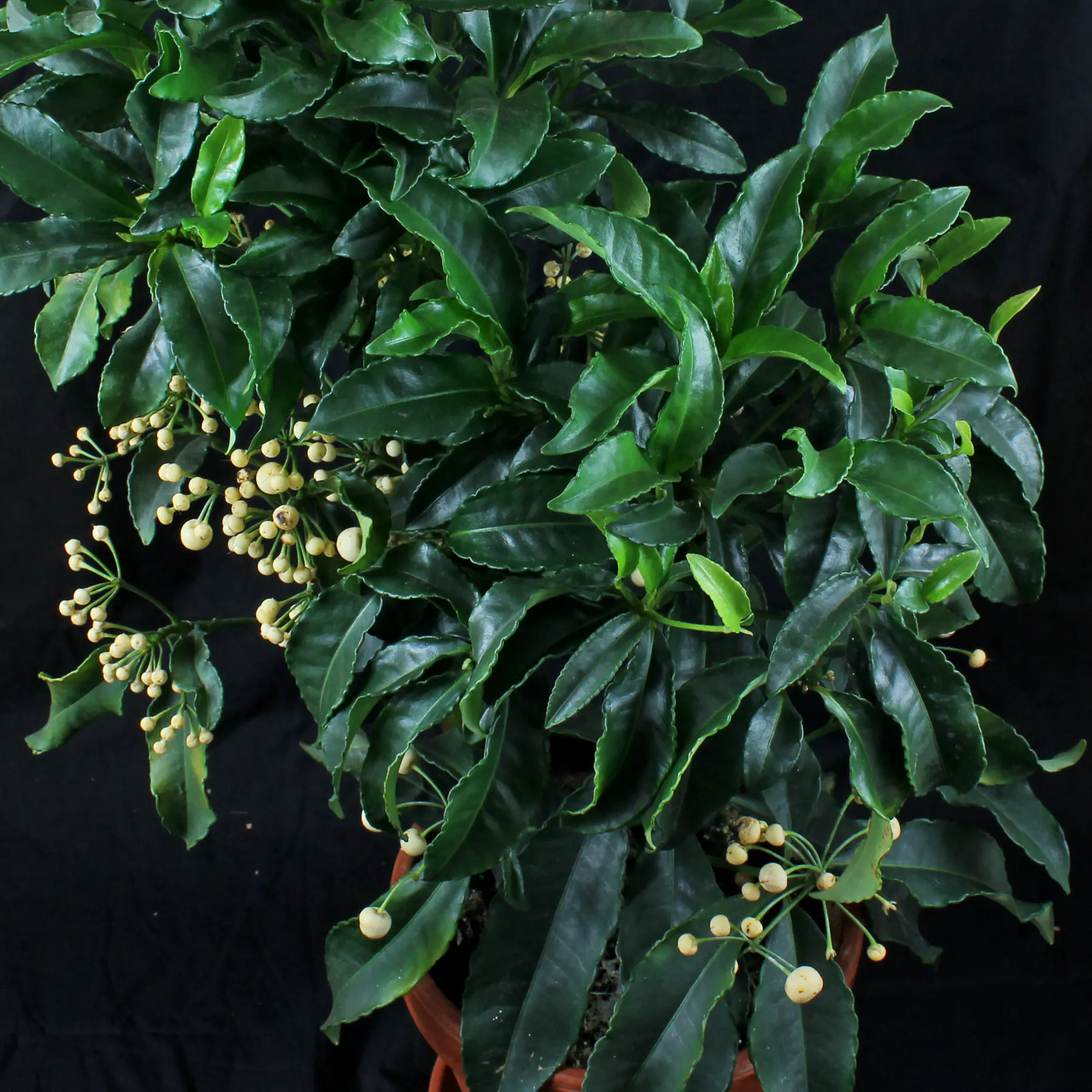
Soil
Regular mixes for indoor plants, container plants, herbs or vegetables can be used.
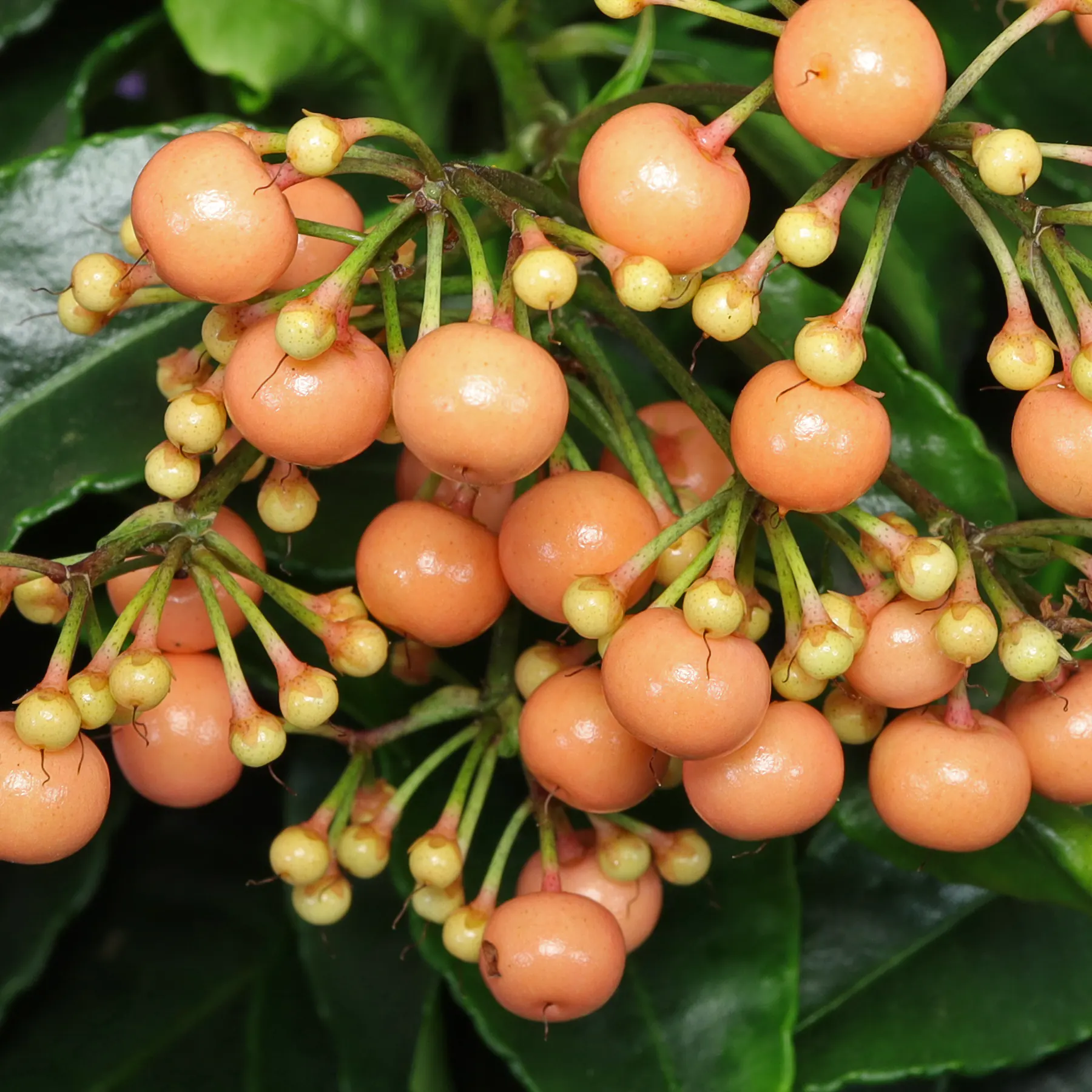
Watering
The soil should be allowed to dry slightly between waterings but not dry out. Rootball dryness and waterlogging are not tolerated. They can lead to root rot or the loss of berries, buds and flowers.

Feeding
Liquid fertilizers for green plants, flowering plants, herbs as well as fertilizer sticks or pellets are suitable. The liquid variants can be given every 4 to 8 weeks from spring to autumn. In the case of slow-release fertilizers (sticks, pellets), once or twice a year is sufficient.
In its first year after purchase or repotting, Coral Berry does not need fertilizing.

Temperature
In winter Ardisia crenata does not want to be quite so warm, now temperatures between 41 and 68 °F (5 and 20 °C) are fine. A cool winter location encourages the onset of flowers.
For a short time, Coral Berry can handle temperatures around freezing. I have overwintered it in an unheated garden house for several years. However, it then takes a few weeks until it sprouts again in spring.

Propagation
Ardisia crenata can be grown from seed. When the berries begin to dry out, the seeds are ripe. Before sowing, the pulp should be removed. Temperatures of 22 °C and above are optimal for germination.
I have not had luck with cuttings.
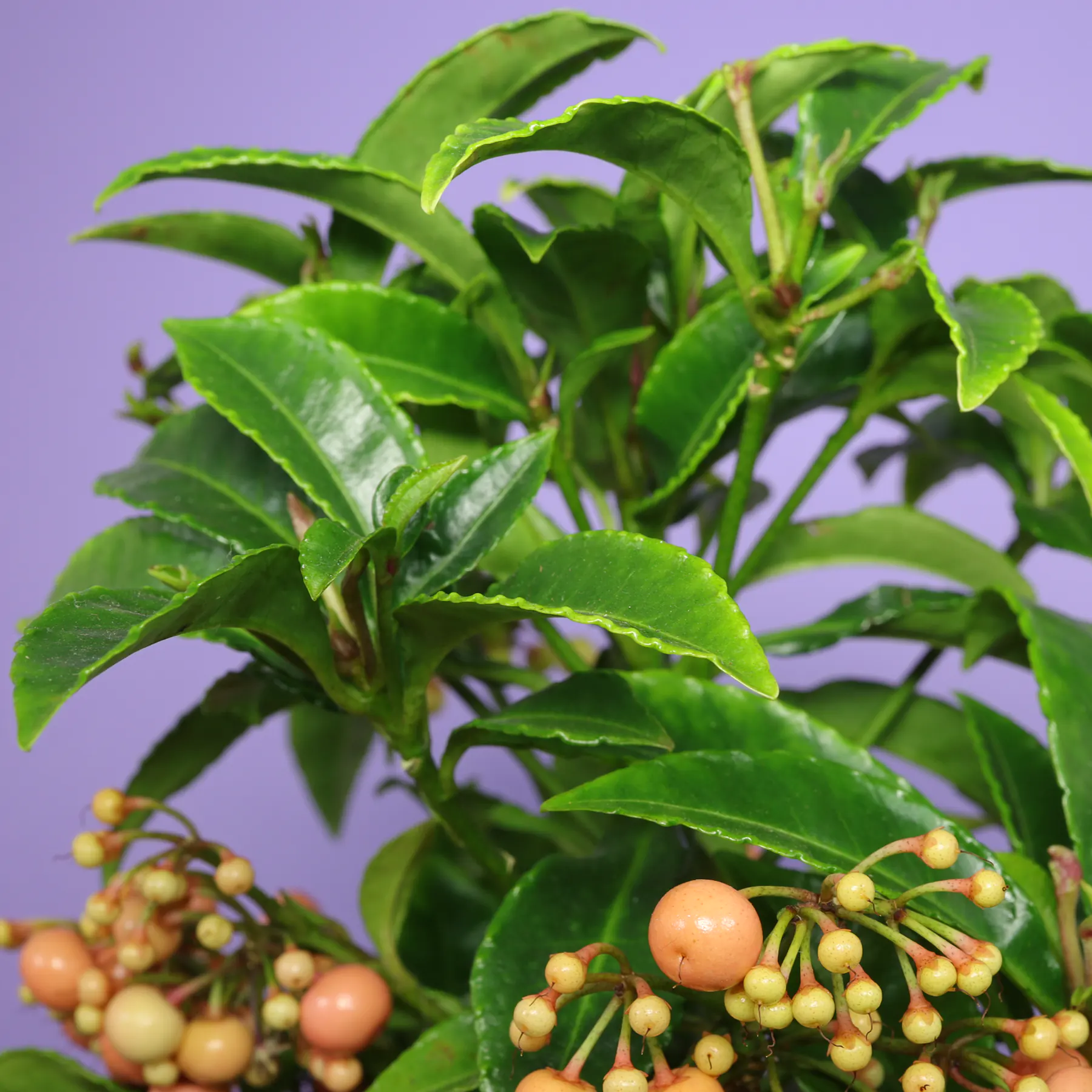
Profile
Scientific name
Ardisia crenata
Common name(s)
Coral Berry, Christmas Berry, Australian Holly, Coral Bush
Family
Primulaceae
Origin
Eastern Asia, tropical Asia
Height
50 to 100 cm
Toxic
The berries are not edible, all parts of the plant are slightly poisonous.
